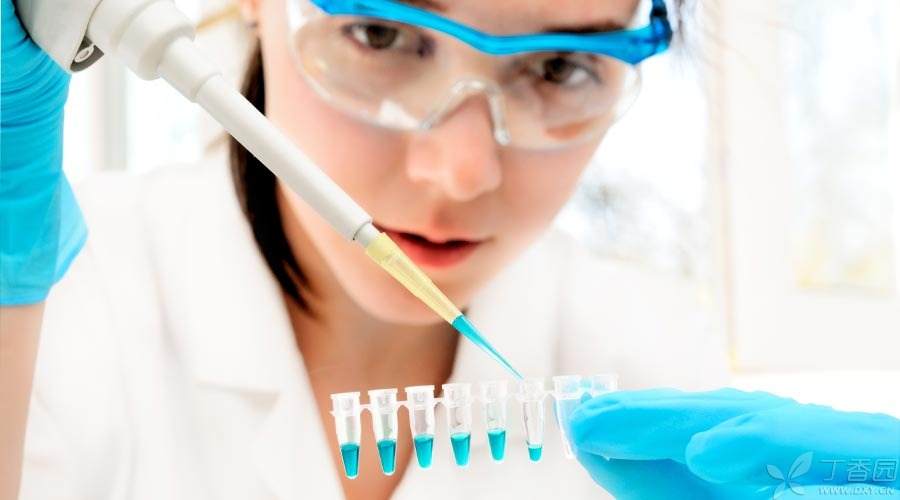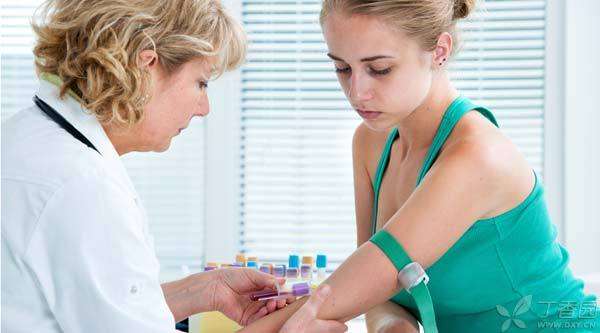
When Honggong was young, she and her husband both felt that they should make a good career, so they delayed the birth of children. After 8 years of marriage, Honggong was 34 years old. Under the urging of both parents, they finally decided to have a baby.
The pregnancy process went smoothly. Just as the whole family was immersed in the joy of welcoming new life, the red mid-Tang test results showed [high risk]! Red red suddenly stunned! The doctor advised her to do further examination and told her that there were two methods: amniocentesis and non-invasive DNA. After returning home, Honggong and her husband went online to look up information, but they still could not understand it and could not choose which examination method to choose.
Today, we will introduce these two methods to you. I hope you can choose your own prenatal examination method to avoid following the trend and blindly following.
Non-invasive DNA testing (NIPT) is a kind of prenatal testing technology developed in recent years, which has the characteristics of non-invasive sampling, no risk of abortion, high sensitivity and high accuracy, so it is quickly favored by parents-to-be.
However, due to technical limitations, it is not applicable to all pregnant women. If it is not used well, it may also bring negative effects. What is the main difference between non-invasive DNA testing and traditional invasive prenatal diagnosis technology?
The difference between invasive and non-invasive
1. Is what amniocentesis?
Traditional invasive prenatal diagnosis techniques mainly include villus sampling, amniocentesis and cord blood sampling. Amniocentesis is the most widely used clinically. Generally, in the second trimester of pregnancy, under the real-time monitoring of ultrasound, a fine needle is used to puncture the needle through the abdomen, and 20 mL amniotic fluid is extracted after entering the amniotic cavity. Fetal cells in the amniotic fluid are collected, and after 2 weeks of culture, special treatment is carried out to obtain fetal chromosomes and karyotype analysis is carried out.
2. What are the risks of amniocentesis?
Because the fine needle has to enter the amniotic cavity, it may lead to complications such as abortion and infection, of which abortion is more common.
The incidence rate of abortion after puncture is about 3/1000. This probability is not only related to the pregnant woman’s own constitution and gestational age, but also related to the experience of puncture doctors and ultrasound doctors. Under the condition of skillful mastery, the amniotic fluid pumping process usually takes about 2 minutes.
3. What are the high-risk factors leading to abortion?
In order to minimize the occurrence of abortion after amniocentesis, the surgeon will inquire about the medical history and perform necessary preoperative examination before puncture. The following conditions may increase the risk of abortion:
- Suspected uterine contraction before puncture; A small amount of vaginal flowing water and bleeding before puncture; History of recurrent spontaneous abortion; Pregnancy complicated with hysteromyoma; Puncture in large months, especially when the gestational age is ≥ 25 weeks; Twin pregnancy.
4. How Reduces Abortion Risk?
Abortion after amniocentesis is related to the pregnant woman’s own state, gestational age and doctor’s experience. Therefore, it is suggested that pregnant women undergoing amniocentesis should choose a hospital with prenatal diagnosis qualification and doctor’s puncture experience for surgery under the conditions of better state and appropriate gestational age (preferably 18-22 weeks).
Special reminder to expectant mothers, prenatal diagnosis qualification is not equal to real-time ultrasound monitoring. Some hospitals due to manpower problems, the operation day will arrange pregnant women to undergo ultrasound examination, set a good position after another sheep wear, this will reduce the safety of the operation.
5. Is what a non-invasive DNA detection technology?
Non-invasive DNA testing (NIPT) is a technique that uses pregnant women’s blood as testing specimens and does not enter amniotic cavity at all.
High-throughput gene sequencing technology developed in recent years makes non-invasive prenatal detection possible. Using this technology, trace fetal DNA fragments in maternal blood can be sequenced, and the sequencing results can be analyzed for biological information, so as to detect whether the fetus suffers from three major chromosomal diseases.
6. Advantages of noninvasive DNA testing
This technique only needs to collect 10 mL of maternal venous blood, Blood collection does not need fasting, does not need prior examination, as long as normal diet, work and rest. In addition, the test can be carried out from 12 weeks of pregnancy, so compared with amniocentesis, the biggest advantage is the safety of sampling and the early detection. The appearance of this method has brought great benefits to pregnant women who are not suitable for amniocentesis.

Second, the difference between diagnostic scope and accuracy
Since non-invasive DNA testing (NIPT) is very safe, can it replace amniocentesis? The answer is no.
1. Diagnostic range of amniocentesis and NIPT
The karyotype analysis report finally issued after amniocentesis covers 23 pairs of chromosomes, which can not only know the abnormal number of fetal chromosomes, but also diagnose structural abnormalities. Therefore, the diagnosis range is very wide and basically covers all chromosomal diseases.
In contrast, the detection range of NIPT is much smaller. At present, the technology can only detect the three most common chromosomal diseases, namely trisomy 21, trisomy 18 and trisomy 13, with detection rates reaching 99%, 96.8% and 92.1% respectively. Although the detection rate is very high, there are still a few missed detections, while structural abnormalities such as microduplication and microdeletion or gene lesions cannot be detected.
Therefore, NIPT can detect very limited diseases. Its clinical application nature is screening, but its accuracy is much higher than serological screening. Amniocentesis is applied as a prenatal diagnosis technology and is still recognized as the [gold standard] for prenatal diagnosis of chromosomal diseases.
2. Accuracy of amniocentesis and NIPT
Another issue worthy of everyone’s concern is the accuracy of detection. Looking through most literatures and popular science articles, we will come to the conclusion that the accuracy of karyotype analysis and NIPT is equivalent. What needs to be reminded is:
The accuracy rate of NIPT is 99% for three common chromosomal diseases, while the accuracy rate of karyotype analysis is 99% for all chromosomal diseases.
In other words, if the expectant mother gets a NIPT test report and the conclusion is [trisomy 21 low risk, trisomy 18 low risk, trisomy 13 low risk], it means that there is a 99% probability that the baby is not trisomy 21, trisomy 18 or trisomy 13; If the expectant mother gets a amniocentesis report and the conclusion is [no obvious karyotype abnormality is found], it means that there is a 99% probability that the baby does not have chromosomal diseases, and there is a 100% probability that the baby does not suffer from trisomy 21, trisomy 18 or trisomy 13, which shows that the difference between the two is very large.
Although NIPT accuracy is quite high, However, false positive and false negative results cannot be avoided under current conditions. For false positive reports, Generally, another amniocentesis can solve the problem. However, false negative results may lead to the birth of Down’s children and bring pain to families and children. Therefore, expectant mothers with normal NIPT results must carefully carry out ultrasound examination, which is the last firewall. Once ultrasound indicates abnormality, amniocentesis is still needed to avoid the negative impact of NIPT false negative results.
Three, the difference between applicable groups
1. NIPT applies to:
- All pregnant women who wish to exclude common chromosomal diseases of the fetus; High-risk pregnant women for serum screening in early and middle trimester of pregnancy; All pregnant women who need fetal chromosome examination but have contraindications to amniocentesis include: central placenta previa, RH negative blood type, coagulation dysfunction, threatened abortion, recurrent spontaneous abortion history, etc.
2. NIPT should be used with caution for the following pregnant women who may have other chromosomal abnormalities:
- One of the couples is a patient with chromosome disease, or a pregnant woman who has been pregnant or given birth to a child with chromosome disease; Pregnant women aged 35 or older; Pregnant women with abnormalities found by ultrasound malformation screening.
3. Amniocentesis is suitable for the following people:
- All pregnant women in the second trimester who wish to obtain a clear diagnosis of fetal chromosomes and have no contraindications to puncture; High-risk pregnant women for serum screening in early and middle trimester of pregnancy; Pregnant women aged 35 or older; One of the couples is a patient with chromosome disease, or a pregnant woman who has been pregnant or given birth to a child with chromosome disease; Pregnant women with abnormalities found by ultrasound malformation screening; NIPT found abnormal pregnant women.
To sum up, NIPT has the characteristics of safety, high detection rate, high accuracy and narrow detection range. In addition to the advantages of high detection rate and high accuracy, amniocentesis has a wide range of detection, not only including all chromosome diseases, but also detecting gene defects, but there is a risk of abortion or infection. Every expectant parent should make a choice after weighing the pros and cons, and avoid blindly following the trend.
For precious children such as twin pregnancy and in vitro fertilization, we prefer NIPT. Of course, the interpretation of the report needs to be more careful and rigorous, and amniocentesis should be performed when necessary to help diagnose the disease.
Responsible Editor: Huang Lijia
Copyright of Clove Garden. No reprinting is allowed without permission.
